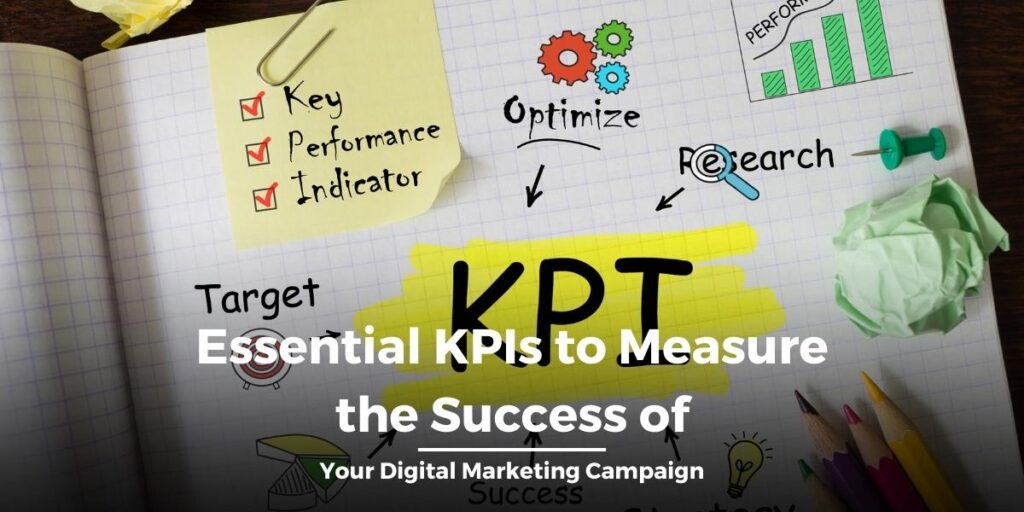In the world of digital marketing, success isn’t left to chance. It’s driven by data, insights, and tangible results. KPI metrics for digital marketing are the guiding stars of any campaign, offering valuable insights into what’s working and where you need to pivot and improve. By focusing on the right metrics, you can ensure every campaign achieves meaningful results that align with your campaign goals. However, with so many metrics and insights, choosing which ones to focus on for maximum impact can be daunting.
In this blog we will break down the 5 essential KPIs, which are a marketer’s must-have to measure the success of digital marketing campaigns, whether you offer digital marketing services in India or elsewhere.
Why KPIs Matter in Digital Marketing?
Before diving into the specifics, it’s crucial to understand why setting the right KPIs is important. KPI metrics for digital marketing serve as benchmarks that align your strategies with your objectives. They bring clarity, quantify results, and hold your efforts accountable. Without monitoring the right digital marketing KPI examples, you’re essentially navigating the scene without a roadmap.
5 essential KPIs that can define your campaign’s success
Now, let’s talk about the five essential KPIs that can define your campaign’s success.
1) Website Traffic and User Behaviour
Unlike a brick-and-mortar store, your website acts as your business’s digital storefront, making traffic metrics a fundamental KPI to track. However, just keeping track of the number of visitors or website traffic isn’t enough. You also need to understand the visitor’s behavior and actions once they land on your website.
Key Metrics to Track:
- Visitors and Sessions: How many people are landing on your website? Are they new or returning? Monitor the number of new and returning visitors to understand the reach and effectiveness of your campaigns.
- Bounce Rate: Are visitors leaving your website after viewing only one page? A high bounce rate can indicate that visitors aren’t finding your website relevant or engaging.
- Average Session Duration and Pages per Session: How engaging is your content? These metrics shed light on how well your content holds visitors’ attention.
- Traffic Sources: Curious about which channels are bringing visitors to your website? Identifying the sources of your website traffic—such as organic search, paid ads, social media, or referrals—can help determine which channels deliver the most impactful results.
- Conversion Rate: Are visitors reaching the end of the conversion funnel? Measure how many visitors complete desired actions, such as filling out a form, making a purchase, or signing up for a newsletter.
Monitoring these metrics will help you gauge whether your digital efforts are driving quality traffic. Tools like Google Analytics can further help you analyze demographics, user behavior, and the devices people use to access your site.
2) Conversion Rate
Getting people to your site is only half the battle; the real achievement lies in turning visitors into conversions. A conversion could be anything from a product purchase to filling out a contact form, depending on your goals.
How to Calculate Conversion Rate:
Conversion Rate = (Conversions ÷ Total Visitors) × 100
This metric is among the most important digital marketing KPI examples, providing a clear measure of your strategy’s effectiveness. A low conversion rate often points to issues such as poor website design, irrelevant targeting, or unclear calls to action. Regularly tracking this KPI ensures you can tweak and optimize campaigns for maximum ROI.
3) Cost Per Acquisition (CPA)
Spending money to acquire customers is a given, but how efficiently are you doing it? CPA is one of the key KPI metrics for digital marketing that answers this question.
How to Calculate CPA:
CPA = Total Campaign Cost ÷ Total Conversions
A high CPA can indicate inefficiencies in your targeting or messaging. Tracking CPA ensures that your marketing spend remains effective and efficient.
4) Social Media Engagement
In 2024, social media isn’t just about likes and aesthetic grids—it’s about creating meaningful connections and trust with your audience. Engagement metrics help you analyze how effectively your content connects with your audience, offering a clear view of your brand’s impact on these platforms.
Key Metrics to Measure:
- Likes, Shares, and Comments: Reflect the level of interaction with your content.
- Engagement Rate: Highlights the percentage of users interacting with your posts relative to your total followers or reach.
- Click-Through Rate (CTR): Measures how effectively your posts drive users to your website.
Including social media engagement in your digital marketing KPI list ensures your content strategy aligns with audience expectations, fostering stronger connections.
5) Return on Investment (ROI)
When it comes to measuring the success of a campaign, ROI is the ultimate indicator. This KPI evaluates whether your marketing efforts deliver a positive return, taking into account both costs and revenue.
How to Calculate ROI:
ROI = (Revenue Generated − Campaign Cost ÷ Campaign Cost) × 100
Focusing on ROI allows you to prioritize high-performing strategies and cut out activities that don’t produce results.
Integrating KPIs for Maximum Impact
Each KPI serves a unique purpose, but they’re most powerful when analyzed together. For example:
- Low website traffic paired with low conversions suggests issues with brand awareness.
- High CPA with low ROI highlights inefficiencies in cost management.
- Strong social media engagement but low CTR might indicate a disconnect between content and call-to-action.
Final Words
Tracking the right KPI metrics for digital marketing isn’t just about crunching numbers—it’s about building a narrative of success. When you focus on these essential metrics, you gain clarity, align your efforts with business goals, and ensure continuous improvement.
By leveraging a strong digital marketing KPI list and analyzing digital marketing KPI examples, you can create campaigns that are not only impactful but also profitable.
